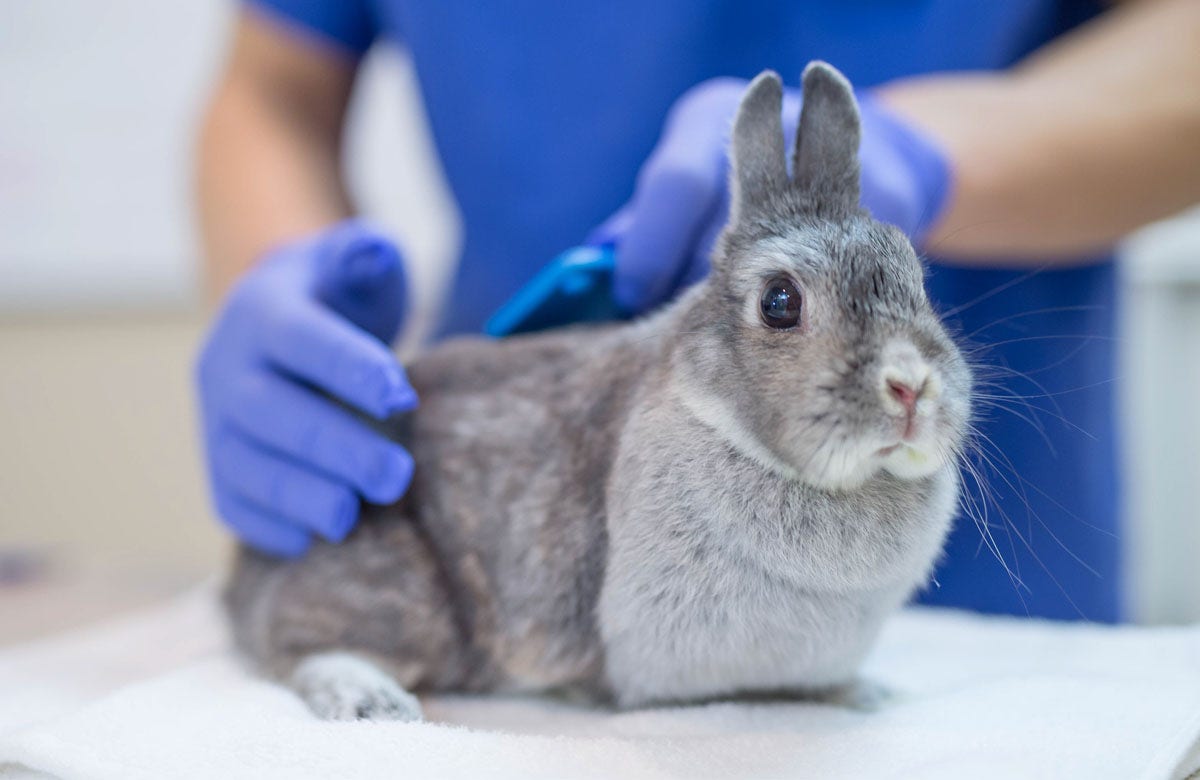Health
Do women need more sleep than men? Here’s what experts think

Sleep is important for everyone – but do women require more than men?
This has been an ongoing discussion among researchers and medical experts, as they weigh the various biological factors that come into play.
Sleep expert Dr. Wendy Troxel, RAND Corporation senior behavioral specialist and a licensed clinical psychologist in Utah, said the idea that women need significantly more sleep than men is “often overstated.”
SLEEPY DURING THE DAY? IT COULD BE AN EARLY WARNING SIGN OF DEMENTIA, STUDY SUGGESTS
Research has shown that the difference between men and women is “rather minimal,” as women only need about 11 to 13 more minutes of sleep, Troxel told Fox News Digital.
In addition to insomnia, women are more likely to experience other sleep disorders, like restless leg syndrome, which can compromise sleep quality. (iStock)
“This exaggeration can pressure women to focus on hitting a specific number of sleep hours, potentially at the expense of sleep quality,” she said.
“This is problematic, as women are already at twice the risk of having insomnia compared to men.”
Sleep medicine physician Dr. William Lu, medical director at Dreem Health in San Francisco, said women do tend to sleep more than men — about 10 to 20 more minutes per night, studies show.
‘HOW MUCH SLEEP IS TOO MUCH?’: ASK A DOCTOR
“However, we don’t know for certain if it is because women need more sleep or because men don’t sleep enough,” he told Fox News Digital.
“If the reason is that women need more sleep, hormones are very likely to play an important factor.”
‘Ultimate self-care’
Troxel said she considers sleep to be the “ultimate self-care for women, yet it’s often the first thing sacrificed amid life’s many demands.”
As women face about twice the risk of depression as men, it is especially important for them to maintain healthy sleep schedules to support their mental health and well-being, she noted.

It may be difficult for pregnant women to find a comfortable sleeping position, which can impact sleep quality, an expert said. (iStock)
“More broadly, quality sleep can support brain health, relationship health and overall physical health, including reducing the risk of heart disease,” the expert said.
For more Health articles, visit www.foxnews.com/health
Proper sleep can also help women better manage stress, maintain a healthy weight and boost immune strength.
How much sleep is enough?
Sleep duration is “very dependent on the individual,” according to Lu.
“Get enough sleep that you feel rested and refreshed,” he advised. “Too many people focus on the specific amount of sleep needed and not about how they feel after waking up.”
“As a general rule of thumb, women can aim to get around 7.5 hours of sleep per night.”

Studies show that women tend to sleep up to 20 minutes more than men per day. (iStock)
Dr. Navya Mysore, medical director for the online health care platform Nurx, suggested that both men and women need about seven to nine hours of sleep per night.
“Too many people focus on the specific amount of sleep needed and not about how they feel after waking up.”
“It’s hard to pinpoint exactly how much more sleep a woman may need compared to men, as there are so many factors that can influence the quality of sleep — like stress levels, sleep hygiene habits, exercise, diet and alcohol,” New York-based Mysore told Fox News Digital.
“If you have a better quality of sleep, you may need closer to seven hours per night versus a person with a poorer quality of sleep, who needs closer to nine hours,” she added.
TO IMPROVE YOUR SLEEP, DO THIS ACTIVITY BEFORE BED, EXPERTS SUGGEST
Troxel agreed that instead of just focusing on sleep duration, men and women should be encouraged to “optimize all aspects of sleep health.”
This includes duration, quality and consistent sleep-wake patterns throughout the week, she said.
Sleep challenges affecting women
Women face more frequent hormonal changes, which Troxel said can lead to fragmented sleep and a higher risk of insomnia, especially during menstrual cycles, pregnancy and menopause.
“Around 60% of women experience sleep disturbances during the menopausal transition, yet these symptoms often go untreated, which can have a significant negative impact on quality of life,” she said.
Lu added that in the weeks leading up to a woman’s period, she may feel increasingly tired and require more sleep.

A person with better sleep quality will require fewer hours of sleep per night, an expert noted. (iStock)
In the second half of the menstrual cycle (or the luteal phase), progesterone levels rise, which can make women feel sleepier and may lead to poorer quality of sleep, according to Mysore.
CLICK HERE TO SIGN UP FOR OUR HEALTH NEWSLETTER
Pregnancy can also cause sleep difficulties.
“Many [pregnant] women have a hard time falling or staying asleep, which can lead to them feeling more tired during the day,” Lu said.

“Effective non-drug treatments for insomnia are available, and it’s crucial to ensure these options are accessible to all women,” a sleep expert said. (iStock)
“There are also increased risks of obstructive sleep apnea and restless leg syndrome during pregnancy, which can factor into sleep quality.”
Symptoms of menopause, like hot flashes, can also cause sleep disruptions.
“Around 60% of women experience sleep disturbances during the menopausal transition, yet these symptoms often go untreated.”
Both experts added that women fulfilling traditional caregiving roles and societal expectations while working can also contribute to sleep disruptions and added stress.
Those experiencing consistent sleep challenges should see a medical provider for recommendations.

Health
Scientists May Be Able to Make Grapefruits Compatible With Medications They Currently Interfere With

You may be among the millions of people who have seen a surprisingly specific warning like this on the labels of drugs you take:
Avoid eating grapefruit or drinking grapefruit juice while using this medication.
Such warnings are issued for dozens of substances, including docetaxel, a cancer drug; erythromycin, an antibiotic; and some statins, the cholesterol-lowering drugs prescribed to more than a third of American adults over 40.
The problem is a set of molecules, furanocoumarins. High levels of furanocoumarins interfere with human liver enzymes, among other processes. In their presence, medications can build up to unhealthy levels in the body. And grapefruits and some related citrus fruits are full of them.
But there is no such warning for other kinds of citrus, such as mandarins and other oranges. Citrus researchers at the Volcani Center in Israel reported Wednesday in the journal The New Phytologist that, by crossing mandarins and grapefruit, they’ve uncovered genes that produce furanocoumarins in some citrus fruits. It’s a finding that opens the possibility of creating grapefruit that doesn’t require a warning label.
Scientists had worked out the compounds’ structures and pieced together a basic flowchart of how they are made years ago, said Yoram Eyal, a professor at the Volcani Center. But the precise identities of enzymes catalyzing the process — the proteins that snip off a branch here, or add a piece there — remained mysterious. He and his colleagues knew that one way to identify them was to breed citrus high in furanocoumarins with those without. If the offspring of such a cross had varying levels of the substances, it should be possible, by digging into their genetics, to pinpoint the genes for the proteins.
“We were afraid to approach it, because it’s very time-consuming and it takes many years,” he said, noting how involved it can be to grow new trees from seeds and assess their genetics. “But finally, we decided we have to dive in.”
When they examined the offspring of a mandarin and a grapefruit, the researchers saw something remarkable. Fifty percent of the young plants had high levels of furanocourmains, and 50 percent had none. That particular signature meant something very specific, in terms of how the ability to make these substances is inherited.
“We saw there was only one gene that could have controlled it,” said Livnat Goldenberg, a Volcani Center researcher who is the lead author of the new study.
The researchers soon identified the gene controlling the production of furanocoumarins in leaves and fruit, which produces an enzyme called 2-oxoglutarate-dependent dioxygenase, or 2OGD for short. Mandarins, it turns out, have a mutated form of this gene that keeps the enzyme from functioning properly. This version cropped up in all the mandarin and orange varieties the researchers checked, explaining why they do not cause the same problems as grapefruit in people taking prescription medications. In these plants, furanocoumarin production is paused.
With gene editing technology, it should be possible to alter the gene in grapefruit as well, Dr. Eyal suggests. The team at the Volcani Center is now exploring that project.
Looking at how widespread this mutated version is in mandarins and some other citrus, the scientists speculate that some gene nearby on the genome must play an important role in a highly prized trait. A long-ago citrus breeder, selecting for some unknown quality, must have unwittingly spread this furanocoumarin-busting version of the gene to an ancestor of modern varieties of mandarins and oranges.
All these years later, that person’s work is coming to light, under the gaze of geneticists, who may, someday, put grapefruit back on the menu.
Health
‘Rabbit fever’ cases rising in US as CDC warns of zoonotic bacterial disease

Cases of tularemia, also known as “rabbit fever,” are on the rise in the U.S., according to a new report from the Centers for Disease Control and Prevention (CDC).
Caused by the bacteria Francisella tularensis, the disease commonly infects rabbits, hares and rodents. However, it is zoonotic, which means it can spread from animals to humans.
The bacteria is a “tier-1 select agent,” a classification given to agents and toxins that “present the greatest risk of deliberate misuse with significant potential for mass casualties or devastating effects to the economy, critical infrastructure or public confidence, and pose a severe threat to public health and safety,” per the CDC.
SUPERBUGS DUE TO ANTIBIOTIC RESISTANCE COULD KILL 39 MILLION PEOPLE BY 2050, LARGE STUDY FINDS
Although tularemia is relatively rare, with only 2,462 diagnoses between 2011 and 2022, cases have risen 56% compared to the prior decade (2001 to 2010), as reported in the CDC’s Morbidity and Mortality Weekly Report.
Cases of tularemia, also known as “rabbit fever,” are on the rise in the U.S., according to a new report from the CDC. (iStock)
“Increased reporting of probable cases might be associated with an actual increase in human infection, improved tularemia detection or both,” the report states.
Health
Diabetes, heart disease cases skyrocket — and scientists pinpoint one key reason

Millions of new cases of diabetes and heart disease every year are caused by sugary drinks, according to newly published research.
Tufts University in Boston led the study, which found that about 2.2 million new diagnoses of type 2 diabetes and 1.2 million new cases of cardiovascular disease were attributed to sugar-sweetened sodas and juices each year, according to a press release.
The findings were published in the journal Nature Medicine this week.
HEART ATTACK RISK COULD RISE WITH ARTIFICIAL SWEETENER CONSUMPTION, STUDY FINDS
The highest rates were found in Colombia, where 48% of new diabetes cases were linked to sugary drinks, and in Mexico, where nearly a third of cases were attributed to them.
Meanwhile, in Latin America, more than 24% of new diabetes cases were linked to sugary beverages, and 21% in sub-Saharan Africa, the study found.
About 2.2 million new cases of type 2 diabetes and 1.2 million new cases of cardiovascular disease occur each year worldwide due to consuming sugar-sweetened soda and juices, according to the findings of a new study. (iStock)
In South Africa, 27.6% of new diabetes cases and 14.6% of cardiovascular disease cases were attributed to sugary drinks.
Sugary drinks are rapidly digested, causing a spike in blood sugar levels with little nutritional value.
Sugary drinks cause blood sugar to spike because they are “rapidly digested,” the research team said.
When consumed on a long-term basis, these types of beverages, in addition to increasing the risk of type 2 diabetes and heart disease, can also lead to weight gain and insulin resistance, the researchers added.

Men are more likely than women to suffer the consequences of sugary drink consumption, as are younger adults compared to their older counterparts, a new study asserts. (iStock)
Professor Dariush Mozaffarian, the study’s senior author, said in a university press release, “Sugar-sweetened beverages are heavily marketed and sold in low- and middle-income nations.”
He added, “Not only are these communities consuming harmful products, but they are also often less well-equipped to deal with the long-term health consequences.”
FRIENDS, FAMILY MAY PROTECT AGAINST HEART ATTACK, STROKE AND TYPE 2 DIABETES, STUDY SUGGESTS
Certain groups are more likely to experience negative health effects from sugary drinks, including men and younger adults, the researchers noted, as news agency SWNS also noted.
New Jersey-based registered dietitian Erin Palinski-Wade, who was not involved in the research, said the findings were to be expected, as diets rich in added sugars are more likely to increase the risk of chronic health conditions, including type 2 diabetes.

When consumed on a long-term basis, these types of beverages can also lead to weight gain and insulin resistance, experts say. (iStock)
“Sugar-sweetened beverages are a major cause of added sugar in the diet and easy to overconsume, as they provide little fullness,” she told Fox News Digital.
“The high calorie content and lack of satisfaction due to little protein, fat or fiber in these drinks can lead to excess calorie consumption, which can lead to weight gain — especially gains in visceral fat (belly fat), which has been found to increase the risk of type 2 diabetes,” she went on.
“Sugar-sweetened beverages are easy to overconsume, as they provide little fullness.”
Palinski-Wade pointed out that there were some limitations to the new research.
“This was an observational study, not a causation study, and shows only an association between diets containing sugar-sweetened beverages and diabetes,” she noted.
“It does not prove that those drinks alone trigger an onset of type 2 diabetes.”
What needs to change?
To remedy the issue, the study authors called for a “multi-pronged approach,” including public health campaigns, regulations on advertising and taxes on sugar-sweetened beverages, the release stated.
CLICK HERE TO SIGN UP FOR OUR HEALTH NEWSLETTER
“We need urgent, evidence-based interventions to curb consumption of sugar-sweetened beverages globally, before even more lives are shortened by their effects on diabetes and heart disease,” first author Laura Lara-Castor, now at the University of Washington, said in the release.

Approximately 65% of adults in the U.S. consume sugar-sweetened beverages daily. (iStock)
Mexico implemented a sugary drinks tax in 2014, which has shown to be effective in reducing consumption, the researchers stated.
“Much more needs to be done, especially in countries in Latin America and Africa, where consumption is high and the health consequences severe,” wrote Mozaffarian.
For more Health articles, visit www.foxnews.com/health
“As a species, we need to address sugar-sweetened beverage consumption.”
Many different factors are involved in insulin resistance and type 2 diabetes, Palinski-Wade noted.
“As a species, we need to address sugar-sweetened beverage consumption.”
“However, reducing your intake of sugar-sweetened beverages can go a long way toward improving overall blood sugar regulation and future health.”
The new research was supported by the Gates Foundation, the American Heart Association and Mexico’s National Council for Science and Technology.
Fox News Digital reached out to the researchers for further comment.
-

 Business1 week ago
Business1 week agoThese are the top 7 issues facing the struggling restaurant industry in 2025
-

 Culture1 week ago
Culture1 week agoThe 25 worst losses in college football history, including Baylor’s 2024 entry at Colorado
-

 Sports1 week ago
Sports1 week agoThe top out-of-contract players available as free transfers: Kimmich, De Bruyne, Van Dijk…
-

 Politics1 week ago
Politics1 week agoNew Orleans attacker had 'remote detonator' for explosives in French Quarter, Biden says
-

 Politics1 week ago
Politics1 week agoCarter's judicial picks reshaped the federal bench across the country
-

 Politics6 days ago
Politics6 days agoWho Are the Recipients of the Presidential Medal of Freedom?
-

 Health5 days ago
Health5 days agoOzempic ‘microdosing’ is the new weight-loss trend: Should you try it?
-

 World1 week ago
World1 week agoIvory Coast says French troops to leave country after decades
















